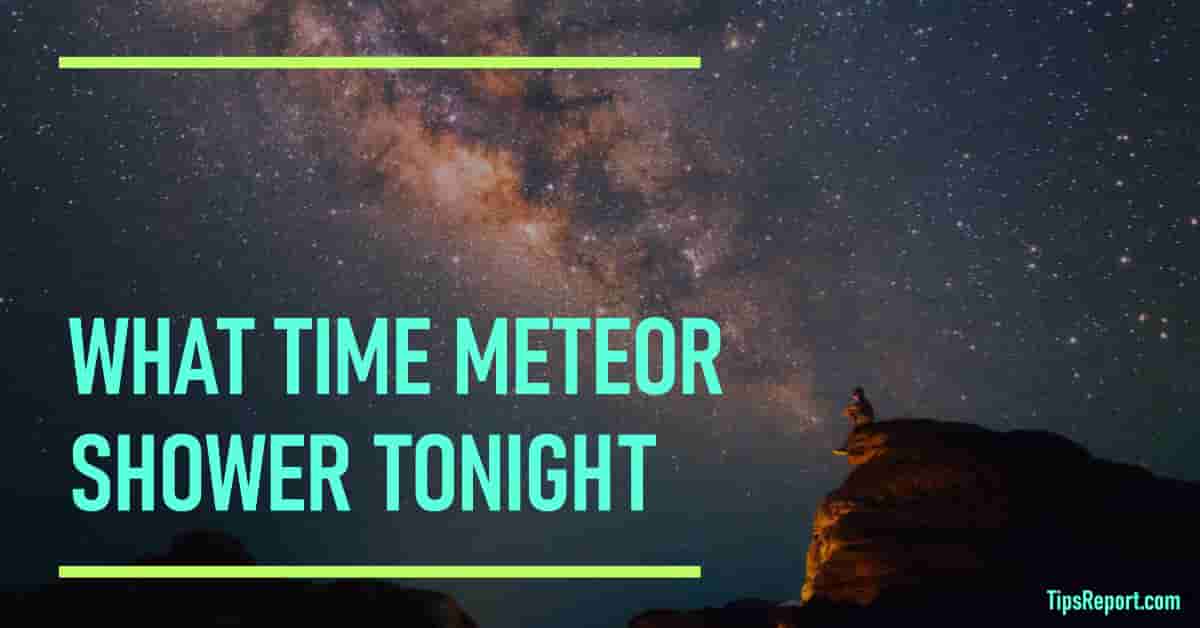The nocturnal expanse has long captivated mankind, with its luminescent stars and enigmatic astral events. Among these celestial wonders, meteor showers stand out, as streaks of luminous light traverse the heavens, etching a memorable tableau in the minds of fortunate spectators. In this discourse, we delve into the enthralling realm of meteor showers, investigating their genesis, mechanisms, and the eagerly awaited meteor shower predicted for the night.
Table of Contents
The Origin of Meteor Showers

Meteor showers, often colloquially referred to as “falling stars,” manifest when Earth’s orbital path crosses the residual remnants of comets or asteroids. As these cosmic entities journey through space, they shed fragments—ranging from minuscule particles to larger boulders—forming a trail of cosmic debris. When Earth’s orbit intersects these trails, the debris interacts with the planet’s atmosphere, generating a luminous display due to the intense friction caused by their swift descent. This phenomenon is the familiar meteor shower.
Mechanics Behind Meteor Showers
The mechanics governing meteor showers involve a harmonious interplay between celestial bodies and Earth’s gaseous envelope. As Earth voyages through space along its orbital trajectory, it encounters these remnants at specific junctures in its orbit, resulting in predictable periods of heightened meteoric activity called meteor showers. The velocity at which these particles collide with the atmosphere dictates their brilliance. Swifter-moving particles generally produce brighter and more captivating meteors, while slower ones may engender fainter luminous streaks.
Awaiting the Nocturnal Meteor Shower
The expectation of a meteor shower sparks enthusiasm not only among amateur stargazers but also within the realm of professional astronomy. Each year, numerous meteor showers grace our skies, providing a splendid occasion to witness nature’s cosmic pyrotechnics. Tonight’s anticipated meteor shower promises a breathtaking spectacle, with astronomers prognosticating a zenith in meteoric occurrences. The exact timing of these displays can vary, contingent on factors such as debris trail density and Earth’s orbital position. Expert calculations pinpoint the climax of tonight’s meteor shower during the late hours, approximately around midnight.
Favorable Observational Conditions
Observing a meteor shower’s grandeur is contingent on ideal conditions. To fully savor this celestial panorama, venturing to an area devoid of urban luminosity, where light pollution remains minimal, is recommended. A clear, unhindered view of the nighttime sky is pivotal for optimal meteor detection. The absence of city lights enables the eyes to acclimate to the darkness, facilitating the clear observation of meteoric streaks. Additionally, patience is a virtue, as meteor showers often encompass intervals of intermittent activity interspersed with periods of heightened meteoric intensity.
Constellations and the Radiant Point
Meteor showers typically emanate from a specific point in the sky known as the radiant point. This point is a consequence of Earth’s perspective as it witnesses the debris stream intersecting its atmosphere. Tonight’s meteor shower is affiliated with a distinct constellation, which serves as a valuable guide to locate the radiant point. Observers can trace the meteoric trails back to their radiant point, augmenting the intrigue of this celestial pageantry.
Photography of the Phenomenon
In the era of digital photography, capturing the brilliance of a meteor shower has developed into a distinct art form. Photographers and aficionados of astrophotography make preparations well in advance, configuring their equipment and adjusting camera parameters for prolonged exposure shots. The challenge lies in immortalizing the ephemeral meteors against the backdrop of the nighttime sky. Accomplished photographers often succeed in capturing remarkable images, capturing these fleeting instants for posterity.
Conclusion
As the night envelops the landscape and stars commence their luminous display, anticipation for the forthcoming meteor shower heightens. The celestial panorama poised to embellish our skies epitomizes the intricate choreography between cosmic residue, Earth’s orbit, and the mystique of the universe. Whether one is a fervent astronomer or simply a spectator appreciative of cosmic elegance, the anticipated meteor shower pledges an unforgettable encounter. So, prepare a vantage point, cast your gaze skyward, and relish the unfolding cosmic theater—an exhibition that forges a connection between us and the immensity of space and time.
